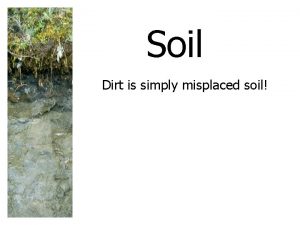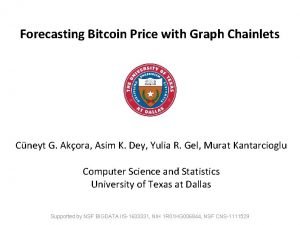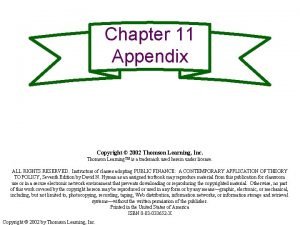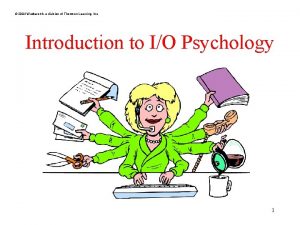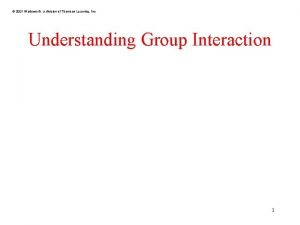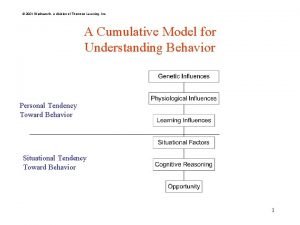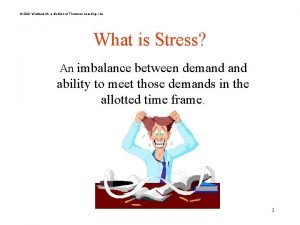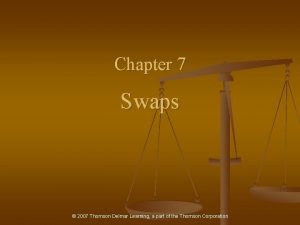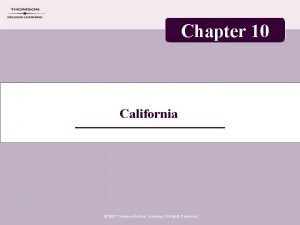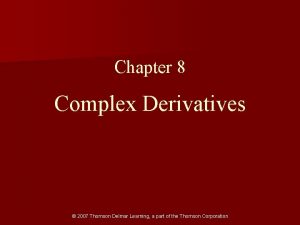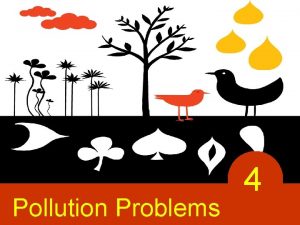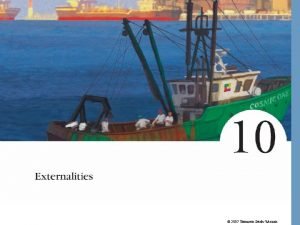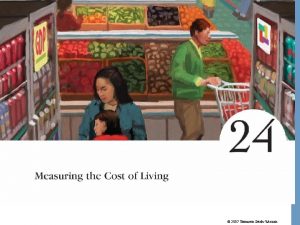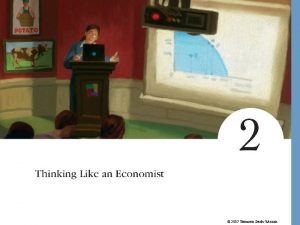Chapter 3 Price Forecasting 2007 Thomson Delmar Learning





















- Slides: 21

Chapter 3 Price Forecasting © 2007 Thomson Delmar Learning, a part of the Thomson Corporation

The Two Big Mine Fields n n n Traders believe either that prices can be forecast or that they cannot. “Had a blow up” or “blew up” signify traders who have lost more than they can stand. The Efficient Market Hypothesis (EMH) is for those who believe prices cannot be forecasted. – Because mine fields are randomly distributed, a certain number will emerge and others will blow up. n The Inefficient Market Hypothesis (IMH) is for those who believe prices can be forecasted. – Individual mine locations may be unknown, but patterns and certain causes and effects can be known. © 2007 Thomson Delmar Learning, a part of the Thomson Corporation

Efficient Market Hypothesis n n Random Walk Hypothesis (RWH) EMH codified into three major forms: – Weak Form—All past information is reflected in price discovery. – Semi-Strong Form—All past information as well as all current information is used to formulate prices. – Strong Form—All past and current information plus all knowable information is considered in the pricing process. © 2007 Thomson Delmar Learning, a part of the Thomson Corporation

Inefficient Market Hypothesis n n IMH theorizes that market prices are not determined with perfect information; prices are constantly evolving as more information becomes available. Technical analysis is based on the belief that where the market has been in the past is the best indicator of where it will be in the future. Fundamental analysis holds that price determination has a cause-and-effect relationship; once the cause is identified, the effects can be forecast. Identified-Insider Traders—another form of IMH? © 2007 Thomson Delmar Learning, a part of the Thomson Corporation

Using the Efficient Market Hypothesis n n EMH is most commonly used in equity markets. Next Day Pricing assumes that tomorrow’s price will be different than today’s. Short Run Minimum/Maximum Prices—where the market has made a new high or low in the short run is a better guide for short run minimum and maximum price forecasts. EMH believers use past short-run price movements only as a guide for general price level expectations. (continued) © 2007 Thomson Delmar Learning, a part of the Thomson Corporation

Using the Inefficient Market Hypothesis (continued) n n IMH has little appeal to the general trading population. IMH appeals primarily to academic researchers. © 2007 Thomson Delmar Learning, a part of the Thomson Corporation

Fundamental Price Forecasting: Supply and Demand n n Economic theory concerns how the interaction between supply and demand determines price. Supply – Producer’s supply curve is upward sloping portion of his or her marginal cost curve; the market supply curve will be the horizontal summation of all individual cost curves. – Price elasticity of supply—equal to the percentage change in quantity supplied due to a percentage change in price. n Fundamental price forecasters will concentrate on changes in production technology, changes in the price of major inputs, and changes in the number of producers. (continued) © 2007 Thomson Delmar Learning, a part of the Thomson Corporation

Fundamental Price Forecasting: Supply and Demand (continued) n n Demand curves are derived from the consumers’ utility of a product—called Diminishing Marginal Utility. Price elasticity of demand – is the responsiveness of quantity changes to changes in price. – is equal to the percent change in the quantity demanded due to a present change in price. n n The individual’s demand curve is determined by holding income, tastes and preferences, and the prices of other goods constant. The sum of all individual demands creates the market demand. (continued) © 2007 Thomson Delmar Learning, a part of the Thomson Corporation

Fundamental Price Forecasting: Supply and Demand (continued) n n Price changes cause a change in quantity demanded, and the amount and the availability of substitutes will determine how responsive the change in quantity demanded will be. Cross price elasticity of demand is the relationship between the price change of one commodity and the effect on quantity demanded of another product. Substitutes—an increase in the price of one product induces an increase in the quantity demanded of another product. Complements—an increase in the price of one product results in a negative change in the quantity demanded of another product. © 2007 Thomson Delmar Learning, a part of the Thomson Corporation

Putting Supply and Demand Together Perfect Market Model n n n Perfectly competitive market is a marketplace with many buyers and sellers who are not large enough to have any undue influence, vying for a homogenous product. A workably competitive market may be a market with many buyers and few sellers or vice versa. However, if neither buyers nor sellers can exert any type of monopoly power, the results are similar to a perfect market. All markets are composed of many different traders and different factors. (continued) © 2007 Thomson Delmar Learning, a part of the Thomson Corporation

Perfect Market Model (continued) n n Arbitrage is the process of capturing excess economic profits between two or more markets. Traders who do this are known as arbitragers. Arbitragers take advantage of the following market differences: – Markets that are separated by space have spatial price differences. Perfect spatial markets differ by the cost of transportation. n n Temporal markets differ by time. They should differ by the cost of storage. Form markets differ by the cost of processing. (continued) © 2007 Thomson Delmar Learning, a part of the Thomson Corporation

Perfect Market Model (continued) n n In perfect markets, spatial, temporal, and form markets differ by the costs of transportation, storage, or processing—no more, no less—and no excess economic profit exists. In imperfect markets, markets have potential profits in them because the price differences between the markets are larger than the costs of transportation, storage, or processing, and arbitragers will exploit the excess profit away. In not perfect markets, markets price differences are less than the cost of transportation, storage, or processing. Arbitragers will keep spatial, temporal and form markets closely tied together. These actions by arbitragers cause derivative market prices and cash market prices to “tend to trend together. ” © 2007 Thomson Delmar Learning, a part of the Thomson Corporation

The Law of One Price n n n If the difference between two or more prices can be justified by cost, then the two prices are identical except for defensible costs. The law of one price is simply another way of looking at the perfect market model. It provides a starting point for arbitragers. © 2007 Thomson Delmar Learning, a part of the Thomson Corporation

Artificial Price Floors n n n Artificial price floors are implemented by the government to change supply. If an artificial price is set above the market equilibrium, a surplus will result (Figure 3 -11). If an artificial price is set below the market equilibrium, a shortage will result (Figure 3 -12). © 2007 Thomson Delmar Learning, a part of the Thomson Corporation

Price Movements n Most price movements are caused by a change in either supply or demand, rarely both. – If the majority of a price movement is caused by a change in supply, it is supply driven. – If the majority of the price movement is caused by a change in demand, it is demand driven. n n Supply Driven—see Figure 3 -13. Demand Driven—see Figure 3 -14. (continued) © 2007 Thomson Delmar Learning, a part of the Thomson Corporation

Price Movements (continued) n Seasonal and Cyclic Movements – Agricultural commodities have biological characteristics that affect the production process. – Seasonal movements are price activities that occur within a calendar year or production period. – Cyclic movements are price tendencies that occur over several production periods or years. © 2007 Thomson Delmar Learning, a part of the Thomson Corporation

Price Forecasters n Two major types of price forecasters: – “gut” analysts – econometric analysts n Gut analysts – filter all of the various supply and demand shifters through their brain to come up with a price estimate. Their forecasts are based on experience, judgment, and intuition. – have short-lived careers when they are bad at what they do. © 2007 Thomson Delmar Learning, a part of the Thomson Corporation

Econometrics n n Econometrics is the study of quantifying economic relationships. This process involves the following: – Determine the economic relationship. – Determine the mathematical expression of the economic model. – Determine what data to use and the time frame of analysis n Econometrics is far more complex than these three steps; however, these areas are the crux of each analysis. © 2007 Thomson Delmar Learning, a part of the Thomson Corporation

Technical Price Analysis n n Technical analysis is based on the belief that where prices have been in the past can be used as a guide for the future direction. The technical analyst – believes that all information is embedded in the price movement and that it is impossible to fully determine all the factors influencing price. – studies the effect of fundamental analysis. © 2007 Thomson Delmar Learning, a part of the Thomson Corporation

Types of Technical Analysis Charting n n There are two types of technical analysis: charting and mathematical modeling. Charting analysis: visualizes price information. – Chart types: n n single price charts bar charts point and figure charts candlesticks – The purpose of each charting tool is to express visually what a price movement looks like in order to determine n n how long a trend will continue. when a trend will reverse. © 2007 Thomson Delmar Learning, a part of the Thomson Corporation

Types of Technical Analysis Mathematical Modeling n Three major categories of mathematical (or mechanical) modeling: – Curve fitting—for a given set of past price movements, an equation will be selected that best fits the data. – Moving averages—at least two averages of past prices (one short-term, one longer-term) are calculated; their intersection indicates a change in trend. – Oscillators—elementary arithmetic expressions used to measure the rate of change of prices. © 2007 Thomson Delmar Learning, a part of the Thomson Corporation
 Delmar thomson learning
Delmar thomson learning Kilala rin sa katawagan bilang maximum price policy
Kilala rin sa katawagan bilang maximum price policy Chapter 6:2 interpreting word parts
Chapter 6:2 interpreting word parts 2009 delmar cengage learning
2009 delmar cengage learning Delmar learning medical abbreviations
Delmar learning medical abbreviations Measuring and recording apical pulse
Measuring and recording apical pulse Chapter 6 the skeletal system answer key
Chapter 6 the skeletal system answer key Chapter 13 medical math
Chapter 13 medical math Chapter 10 cultural diversity
Chapter 10 cultural diversity Delmar cengage learning instructor resources
Delmar cengage learning instructor resources Mitochondria
Mitochondria Simply misplaced
Simply misplaced Chainlets
Chainlets Thomson learning inc
Thomson learning inc Wadsworth thomson learning
Wadsworth thomson learning Wadsworth/thomson learning
Wadsworth/thomson learning Thomson learning inc
Thomson learning inc Thomson learning
Thomson learning Digestion of protein in body
Digestion of protein in body Wadsworth thomson learning
Wadsworth thomson learning Thomson learning inc
Thomson learning inc Delmar isotonic
Delmar isotonic











